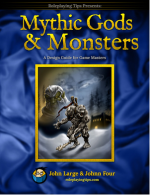Johnn's Picks: 2-Player Board Games
Johnn Four
I like strategy games and games that make me think. My wife likes casual games and social games, so she can relax. It's a hard combo to please. Over the years, though, we've found a few games with the right mix of strategy and casual so we can each get what we like from two player board games while enjoying what we like most - each other's company.
Here's a picture of the games we take camping with us:
Balloon Cup
It's a nice mix of chance, double solitaire, and strategy. You try to earn coloured cubes by laying cards down to get the lowest or highest total per balloon ride, depending on a certain card flip.
You can lay cards onto your opponent's groups to worsen their score, or play them on your side to improve yours.
Games are fast, about twenty minutes. While deep thinking is not required, I like the dynamic of choosing what balloon rides to go after and whether to improve your scores or sabotage your opponent's, all within a larger context of trying to amass a certain combination of cubes from multiple rounds of play.
Race For the Galaxy
A card game where you build out your solar system, enhance it with defenses and military might, and gather resources each turn and use them to perform various actions during the game's phases.
As a typical card game, there are buffs and powers on cards you can use for temporary effects, to foil your foe, or enhance your empire long-term.
The mechanics are no more complex than, say, Catan, and the sci-fi setting is a nice change from the abstract or fantasy settings of our other games.
Based on what cards I draw during the game, I enjoy figuring out whether to be a resource builder (farmer), go military, or strike a balance.
Games take about 30 minutes, and we've found you can sometimes recover from a poor start, so luck is a factor but not the deciding one.
Munchkin
Unlike Race For the Galaxy, luck has a huge say in this game. It's RPG comedy meets Uno.
You have a first level character. Cards from the decks build up your character, give you magic items or loot to sell for XP, or monsters to fight for XP. The first player to hit 10th level wins.
On the box it says 3+ players. However, my wife and I enjoy the game as-is with just us two. Though the PVP aspect of the game has no mystery - it's going to be my wife pitting monsters and effects against my character or vice versa - we enjoy building up our PCs, seeing what mayhem the next card turned over causes, and reading the funny text on the cards.
Also a fast game, sometimes just five minutes if a PC dies early. But set up time is seconds, so we just gloat, re-deal, and play again.
Tigris & Euphrates
At first glance this game looks like Carcassonne, which hooked my wife. Draw tiles from a bag, build colour groupings on the board through tile placement, and get points each round based on how your colour groups fare.
However, there are aspects of Go with this game, plus a couple of interesting mechanics that allow you to go into full strategy mode if you want.
When two same-colour groups touch, war breaks out. The side with the most tiles of that colour wins and earns points. The loser takes their tiles off the board and must rebuild. So, you are always giving thought about what direction to build in and whether the time is right to touch groups and engage.
Another great mechanic is your final score is based on how many points you've accumulated for your weakest colour group. There are four colours you build points for. If your best colour has 10 points but your worst colour has 4, your final game score is 4. So it's a game of balance. Nice.
This one takes us a couple hours to play. Casual players will enjoy drawing tiles and building their colour groups on the board. Wargamers will enjoy the deeper choices and decisions the game offers.
Alhambra
This is another tile placement game with an economic slant. You build your settlements around an oasis. There are five colour groups. You draw from a deck of numbered cards that act as currency. On your turn, you spend your coins of one type of colour to buy a tile on the oasis board. You then add the tile to your settlement.
The game has three rounds of scoring. The tiles themselves have five colours, and each tile has a value score on it. Players with the highest total of values for each colour get victory points. Points scale each round, so you are rewarded for focusing on just some of the colour groups, which offers interesting choices during the game.
Tiles also have walls on some or all of their four sides. You can only place open faces against open faces, and walls against walls. So your settlement must be built in a Tetris-like fashion, which is another consideration when choosing what tiles to buy from the market.
Finally, if you have the exact amount of coins when buying tiles, you get a free turn. So there's often an interesting choice on whether to buy now and end your turn, or wait to see if you can get exact change and go for one or more free turns.
Games take about 45 minutes to play. With all the cards, settlements, and scoring markers, there's some small pieces to take care of and you'll need a larger space than your average small camping table.






